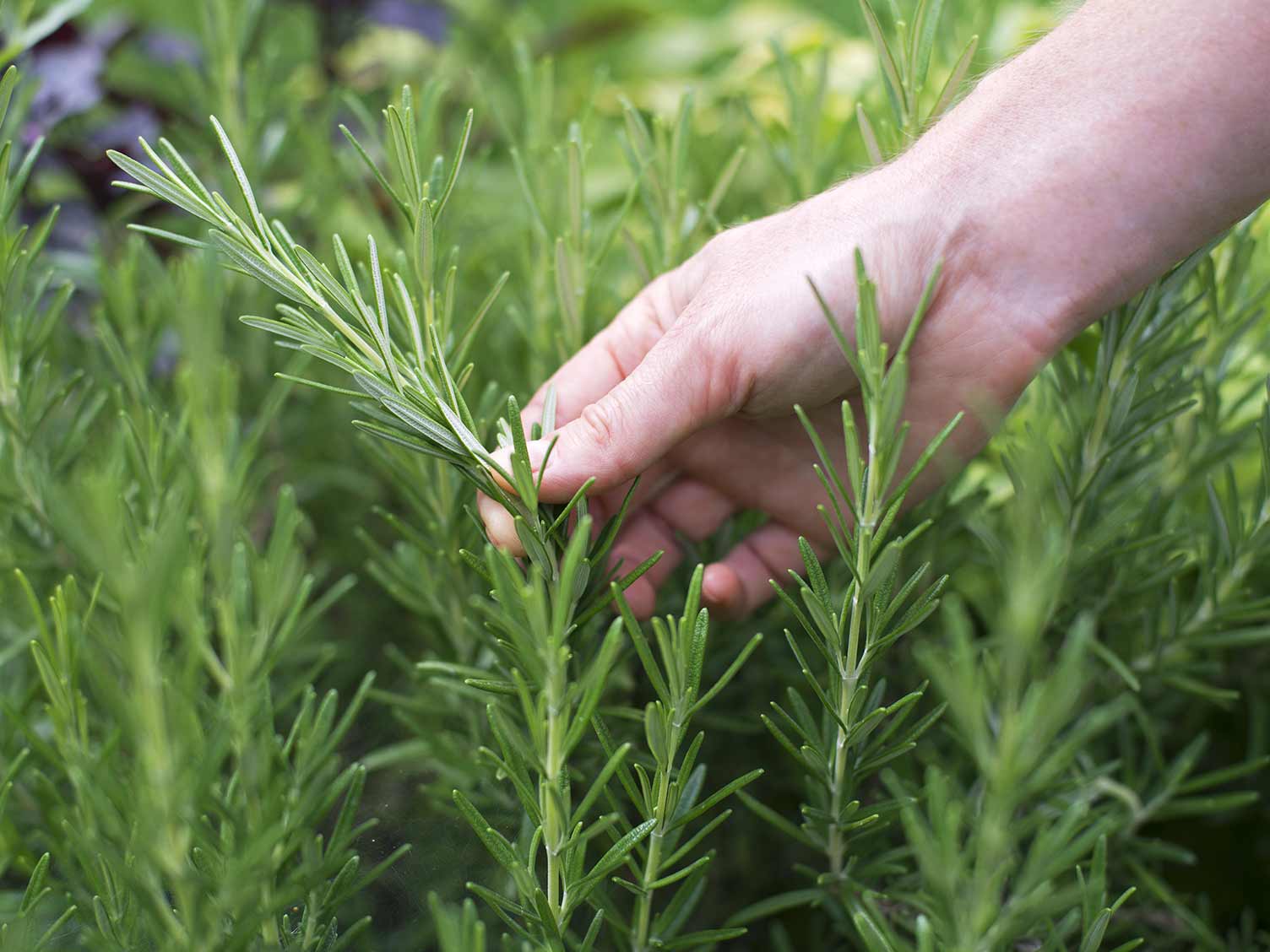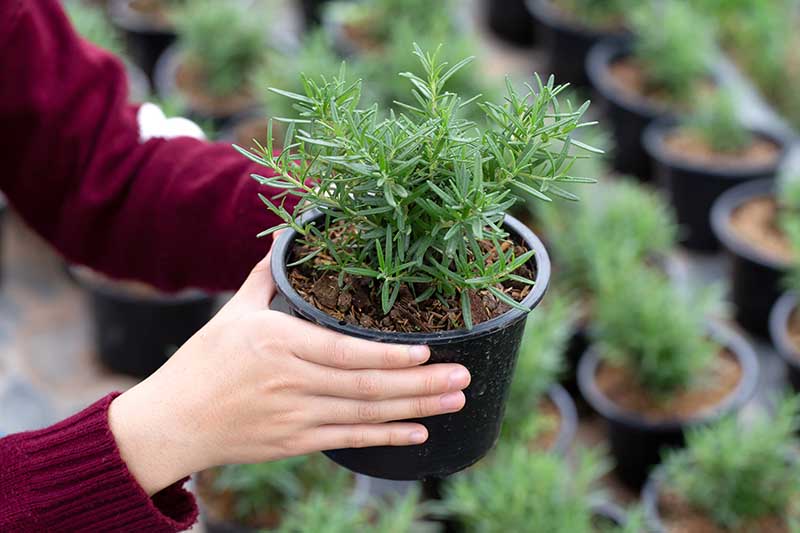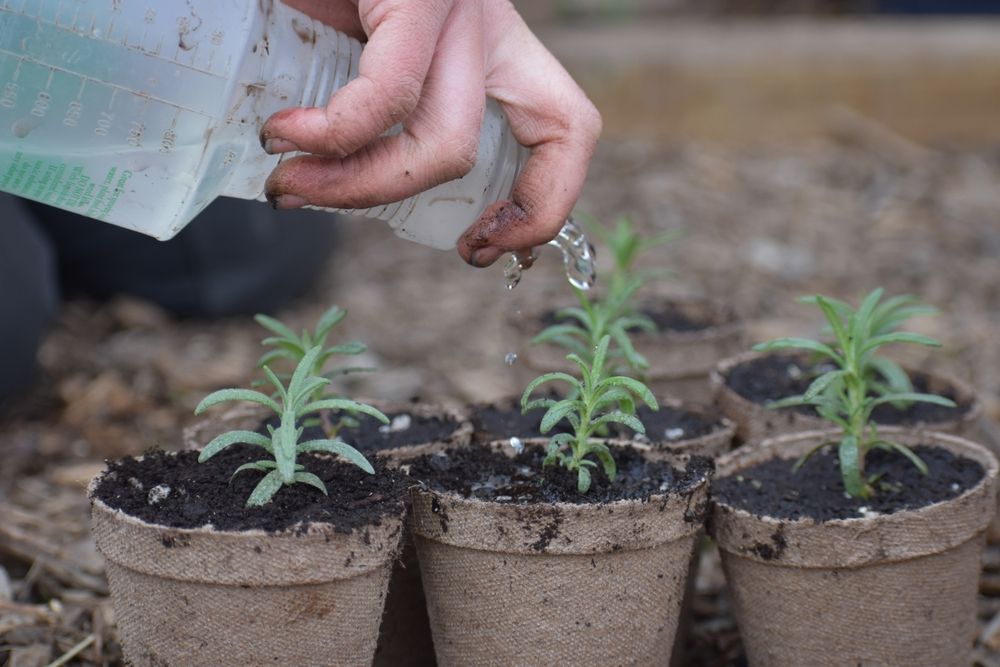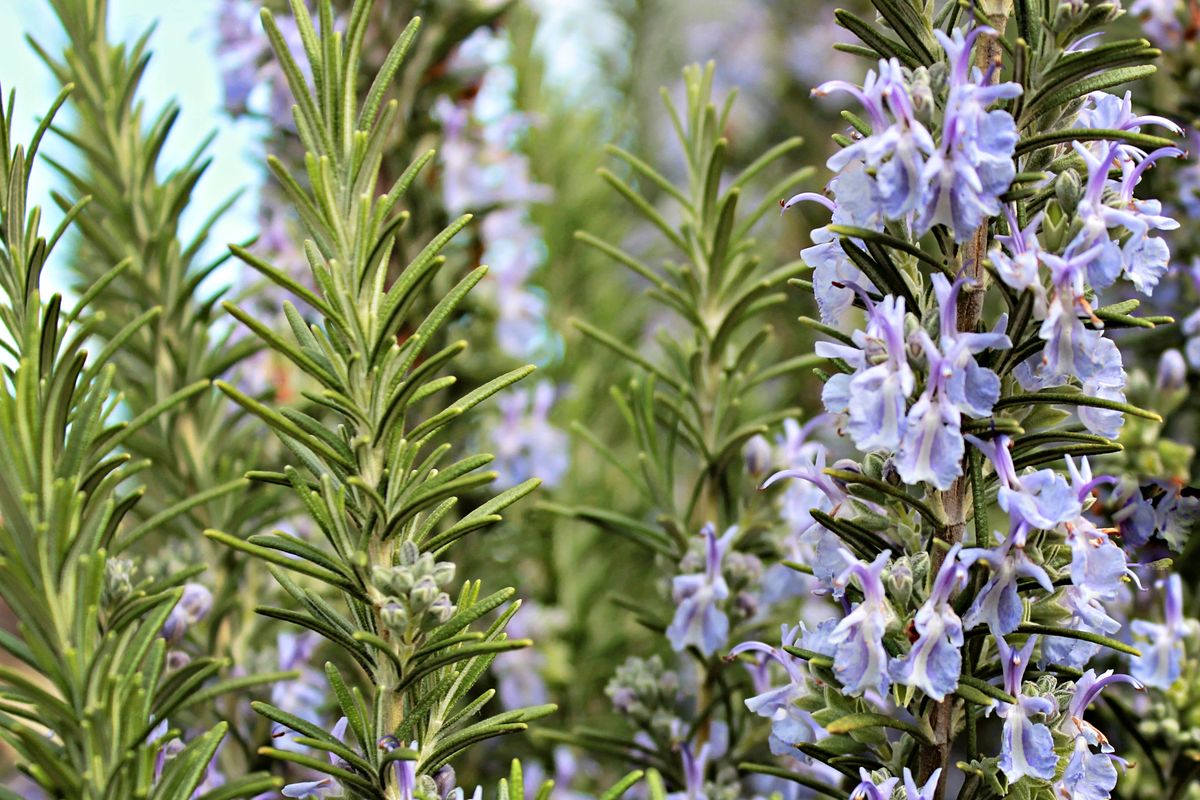Unlocking the Secrets to a Thriving Rosemary Plant
Rosemary plants are a popular choice for gardeners and cooks alike, thanks to their fragrant, flavorful leaves and low-maintenance requirements. However, to get the most out of these versatile herbs, it’s essential to understand how to take care of a rosemary plant. With proper care, rosemary plants can thrive in a variety of environments, from indoor pots to outdoor gardens. In this comprehensive guide, we’ll explore the key elements of rosemary plant care, from choosing the right environment to pruning and training for maximum yield.
One of the primary benefits of growing rosemary is its ability to add fresh flavor to a wide range of dishes, from roasted meats to soups and stews. But rosemary plants also offer a number of other advantages, including their attractive, fragrant foliage and their ability to attract pollinators and other beneficial insects. By learning how to take care of a rosemary plant, you can enjoy these benefits and more, while also adding a touch of elegance and sophistication to your garden or indoor space.
Whether you’re a seasoned gardener or just starting out, taking care of a rosemary plant is relatively straightforward. By following a few simple tips and guidelines, you can help your rosemary plant thrive and enjoy a bountiful harvest of fresh, fragrant leaves. In the following sections, we’ll delve deeper into the specifics of rosemary plant care, covering topics such as environment, watering, fertilizing, pruning, and pest control.
Choosing the Right Environment for Your Rosemary Plant
Rosemary plants are adapted to the Mediterranean climate, where they thrive in well-draining soil and full sun. To replicate these conditions indoors or outdoors, it’s essential to choose the right environment for your rosemary plant. When it comes to temperature, rosemary plants prefer daytime temperatures between 65-75°F (18-24°C) and nighttime temperatures around 55-65°F (13-18°C).
Humidity is also an important factor to consider when caring for a rosemary plant. These plants prefer a relatively low humidity environment, with an ideal range of 40-50%. To achieve this, you can use a humidifier or group plants together to create a microclimate. In terms of sunlight, rosemary plants require at least 4-6 hours of direct sunlight per day. If you’re growing your rosemary plant indoors, consider placing it near a south-facing window or using grow lights to supplement the natural light.
In addition to temperature, humidity, and sunlight, the type of soil you use can also impact the health and well-being of your rosemary plant. Rosemary plants prefer well-draining soil that is rich in organic matter. You can create a well-draining potting mix by combining peat moss, perlite, and vermiculite. Avoid using regular potting soil, as it can retain too much water and cause root rot.
By choosing the right environment for your rosemary plant, you can help it thrive and enjoy a bountiful harvest of fresh, fragrant leaves. Whether you’re growing your rosemary plant indoors or outdoors, following these guidelines can help you create the ideal conditions for optimal growth and health.
Watering Your Rosemary Plant: Finding the Perfect Balance
Watering is a crucial aspect of rosemary plant care, and finding the perfect balance is essential to prevent overwatering and underwatering. Rosemary plants prefer well-draining soil and should be watered when the top inch of soil feels dry to the touch. Avoid getting water on the leaves or crown of the plant, as this can cause root rot and other problems.
To check the soil moisture, insert your finger into the soil up to the first knuckle. If the soil feels dry, it’s time to water. If it’s already moist, wait another day or two before checking again. Water your rosemary plant thoroughly, making sure the pot drains well to prevent waterlogged soil.
The frequency of watering will depend on the climate, soil type, and time of year. In general, rosemary plants require more water during the spring and summer months when they’re actively growing. During the fall and winter months, reduce watering to once every 10-14 days.
It’s also important to avoid overwatering, which can lead to root rot and other problems. If you notice the leaves turning yellow or dropping off, it may be a sign that the plant is receiving too much water. On the other hand, underwatering can cause the leaves to become crispy and turn brown.
By finding the perfect balance of watering, you can help your rosemary plant thrive and enjoy a bountiful harvest of fresh, fragrant leaves. Remember to monitor the soil moisture regularly and adjust your watering schedule accordingly.
Fertilizing Your Rosemary Plant for Optimal Growth
Fertilizing is an essential part of rosemary plant care, as it provides the necessary nutrients for healthy growth and development. When it comes to fertilizing a rosemary plant, it’s essential to choose the right type of fertilizer and apply it at the right time.
Rosemary plants prefer a balanced fertilizer that is high in phosphorus, which promotes root growth and development. A fertilizer with a ratio of 10-10-10 (nitrogen-phosphorus-potassium) is ideal for rosemary plants. You can also use a fertilizer that is specifically formulated for herbs, as these products typically contain the necessary nutrients for optimal growth.
When to fertilize your rosemary plant depends on the time of year and the plant’s growth stage. During the spring and summer months, fertilize your rosemary plant once a month. During the fall and winter months, reduce fertilization to once every 2-3 months.
It’s also essential to avoid overfertilizing, as this can cause more harm than good. Overfertilizing can lead to weak and leggy growth, as well as an increased risk of pests and diseases. To avoid overfertilizing, start with a small amount of fertilizer and gradually increase the amount as needed.
In addition to fertilizing, you can also use compost or well-rotted manure to provide your rosemary plant with essential nutrients. These natural products are rich in nutrients and can help promote healthy growth and development.
By fertilizing your rosemary plant regularly and using the right type of fertilizer, you can promote healthy growth and development, and enjoy a bountiful harvest of fresh, fragrant leaves. Remember to always follow the instructions on the fertilizer package and start with a small amount to avoid overfertilizing.
Pruning and Training Your Rosemary Plant for Maximum Yield
Pruning and training are essential techniques for maintaining a healthy and productive rosemary plant. Regular pruning helps to promote bushy growth, prevent legginess, and encourage the plant to produce more leaves and stems. It’s also a great way to harvest fresh rosemary for cooking and other uses.
To prune your rosemary plant, start by removing any dead or damaged leaves and stems. This will help to prevent the spread of disease and encourage healthy growth. Next, use a pair of clean and sharp pruning shears to cut back the stems to about one-third of their length. This will help to promote bushy growth and encourage the plant to produce more leaves and stems.
In addition to pruning, training is also an important technique for maintaining a healthy and productive rosemary plant. Training involves gently bending and shaping the stems to encourage the plant to grow in a specific direction. This can help to promote a more compact and bushy shape, and can also help to increase yields.
To train your rosemary plant, start by gently bending the stems in the direction you want them to grow. You can use a trellis or other support to help hold the stems in place. As the plant grows, continue to gently bend and shape the stems to encourage the plant to grow in the desired direction.
Harvesting rosemary leaves and stems is also an important part of pruning and training. To harvest, simply snip off the leaves and stems you need with a pair of clean and sharp pruning shears. You can use the leaves and stems fresh, or dry them for later use.
By pruning and training your rosemary plant regularly, you can help to promote healthy growth, increase yields, and enjoy a bountiful harvest of fresh, fragrant leaves and stems. Remember to always use clean and sharp pruning shears, and to harvest the leaves and stems gently to avoid damaging the plant.
Pest Control and Common Problems: Troubleshooting Your Rosemary Plant
Despite its hardiness, rosemary plants can be susceptible to pests and diseases. Regular monitoring and prompt action can help prevent infestations and infections. Here are some common pests and problems that can affect rosemary plants, along with tips on how to identify and address them.
Spider mites are tiny, spider-like insects that feed on the sap of rosemary plants. They can cause yellowing or bronzing of the leaves, and fine webbing on the stems. To control spider mites, spray the plant with a strong jet of water to dislodge the mites, and then treat with insecticidal soap or neem oil.
Mealybugs are small, white, cottony insects that feed on the sap of rosemary plants. They can cause stunted growth and yellowing of the leaves. To control mealybugs, remove any infested areas, and treat the plant with insecticidal soap or neem oil.
Root rot is a common problem in rosemary plants, caused by overwatering or poor drainage. It can cause the roots to rot, leading to yellowing or droopy leaves. To prevent root rot, ensure good drainage, and avoid overwatering. If the plant is already affected, remove any rotting roots, and treat with a fungicide.
Other common problems that can affect rosemary plants include powdery mildew, leaf spot, and aphids. To prevent these problems, ensure good air circulation, and avoid overhead watering. If the plant is already affected, treat with a fungicide or insecticidal soap.
By being aware of these common pests and problems, and taking prompt action, you can help keep your rosemary plant healthy and thriving. Remember to always use organic and integrated pest management methods whenever possible, to minimize harm to the environment and human health.
Propagating Rosemary Plants: Sharing Your Favorite Herb with Friends
Propagating rosemary plants is a great way to share your favorite herb with friends and family, and to create new plants for your own garden or indoor space. There are several methods for propagating rosemary plants, including cuttings, division, and layering.
One of the most common methods for propagating rosemary plants is through cuttings. To take cuttings, choose healthy stems with plenty of leaves, and cut them from the plant using a sharp knife or pruning shears. Remove lower leaves from the cutting, and dip the cut end into a rooting hormone powder or liquid. Plant the cutting in a pot filled with a well-draining seed starting mix, and water thoroughly. Keep the soil consistently moist, and provide bright, indirect light.
Another method for propagating rosemary plants is through division. To divide a rosemary plant, carefully dig up the entire plant, and gently separate the roots. Replant the separated sections in individual pots, and water thoroughly. This method is best done in the spring or fall, when the plant is dormant.
Layering is a third method for propagating rosemary plants. To layer a rosemary plant, choose a long stem, and bend it down to the ground. Secure the stem in place using a rock or a U-shaped wire, and cover the buried portion with soil. Roots should develop within a few weeks, and the new plant can be cut from the parent plant and potted up.
Regardless of the method used, it’s essential to provide the new plants with the right conditions to thrive. This includes plenty of light, water, and nutrients. With proper care, your new rosemary plants should be healthy and thriving in no time.
By propagating your rosemary plant, you can share your favorite herb with friends and family, and create new plants for your own garden or indoor space. With a little patience and care, you can enjoy a bountiful harvest of fresh, fragrant rosemary leaves and stems.
Enjoying the Fruits of Your Labor: Using Fresh Rosemary in Cooking
With a thriving rosemary plant, you can enjoy a bountiful harvest of fresh, fragrant leaves and stems. Rosemary is a versatile herb that can be used in a variety of dishes, from soups and stews to roasted meats and vegetables. Here are some ideas for using fresh rosemary in cooking:
One of the most popular ways to use rosemary is in roasted meats. Simply rub the meat with olive oil, sprinkle with minced rosemary, and roast in the oven until cooked through. You can also use rosemary to make a delicious herb butter by mixing softened butter with minced rosemary and garlic.
Rosemary is also a great addition to soups and stews. Try adding a few sprigs of fresh rosemary to your favorite soup or stew recipe for a boost of flavor. You can also use rosemary to make a flavorful tea by steeping the leaves in hot water.
In addition to its culinary uses, rosemary is also a popular ingredient in herbal remedies. It is said to have a number of health benefits, including improving digestion and reducing stress. You can use rosemary to make a soothing tea by steeping the leaves in hot water, or add it to your favorite herbal remedy recipe.
With its piney flavor and fragrance, rosemary is a great addition to a variety of dishes. Whether you’re looking to add some flavor to your cooking or simply enjoy the fragrance of fresh rosemary, this herb is sure to please. So why not give it a try? Experiment with different rosemary-based dishes and share your own favorite recipes with friends and family.






:max_bytes(150000):strip_icc()/SprucePlantSeries-120-2-2ad883ecc012468c95c5c3e01fb78921.jpg)
